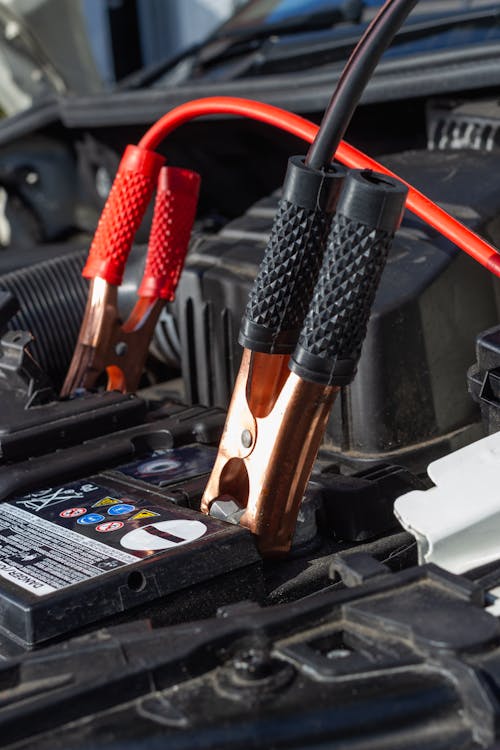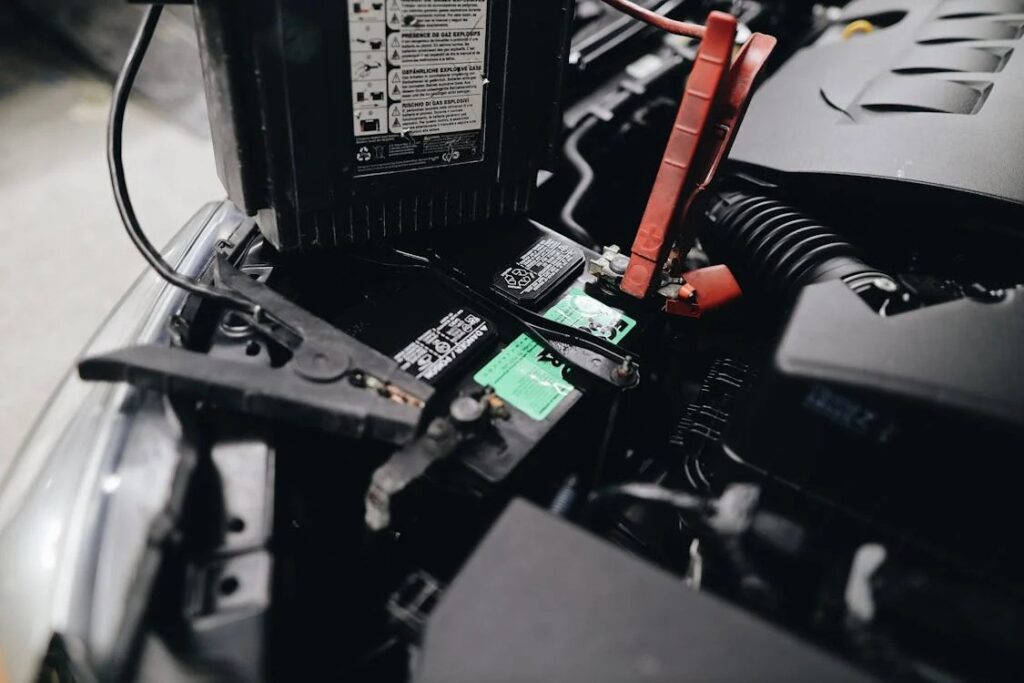How to Charge a Car Battery
Like your smartphone and other mobile devices, car batteries need recharging, too. However, the process on how to charge a car battery is a bit more complex – and takes more time.
This guide explains in detail the steps you must take when you discover your car battery is dead, and some tips on how to ensure that you won’t end up with a dead car battery.
Key Takeaways
• The car battery converts the energy that powers the electrical components of your car.
• Charging a battery requires only basic supplies, such as a battery charger.
• The process of charging a battery takes several hours to get a full charge, but it varies depending on the type of charger you use.
• A dead or failing car battery can be due to parasitic drain, extreme weather conditions, old battery, and loose battery connections.
• Common signs you need to place your car battery are when you have trouble starting the engine, relying on jumpstart too often, an indicator light on the dashboard, and if you experience a nasty smell.

How Does a Car Battery Work?
Before you know how to charge a car battery, it’s crucial that you know what car batteries do. The car battery has two primary roles:
• It powers the car to be able to start
• It distributes the electrical load with the alternator
A series of chemical reaction allows the battery to convert chemical energy to electrical energy. That energy is stored within the battery for later use, or distributed as necessary. Thus, even when the engine is off, you can tap energy from the battery to power key car accessories, such as the headlights and radio.
Whenever you start your car, the electricity is directed to the engine’s starter and the alternator converts the mechanical energy into electrical energy. This exchange of voltage charges the battery. In case there is a faulty alternator, your battery will enable the vehicle to run for a short time.
What Causes Battery Failure or Draining
We’ve already established the importance of a car battery and the hassle when it suddenly dies on you. Therefore, it is crucial to know what causes battery to drain or fail so you can avoid them.
Old Battery
Like most car components, the car battery has a designated lifespan. Most batteries can last between four to five years. If your battery is old, it cannot hold a full charge, making it at risk of draining fast.
Parasitic Drain
Your battery dies when you leave your headlights or any electrical components running with the ignition switched off. It drains the battery of energy because they have no other power sources.
Loose or Corroded Battery Connections
Any faulty or loose battery connections can cause defective charging, causing your battery to drain quickly.
Frequent Short Drives
The battery needs the engine to run for a long time to be able to get adequate charge. If you’re taking short drives most of the time, the engine does not run long enough to charge the battery. Taking frequent short trips can be detrimental to your battery life, significantly reducing its lifespan to two to three years.
Extreme Weather
Weather conditions that are too hot or too cold can cause your battery to fail or die. Newer batteries can resist extreme weather changes but older batteries are more vulnerable to failing. Make sure you choose the best car battery for cold weather or hot weather, depending on your needs or location.
What You Need to Charge a Car Battery
These tools and supplies are what you need to charge a car battery.
• Battery Charger
• Magnetic Light
• Pocket Screwdriver
• Extension Cord (if necessary)
How to Charge a Car Battery: Step-By-Step Guide
Let’s walk through the steps on how to charge a car battery.
Step 1: Check the owner’s manual.
Every battery is different depending on your car’s make and model. Each one has specific instructions on how to charge them correctly. You can refer to the manual for the correct charging instructions.
Step 2: Make sure to charge it safely.
Check if there are any flames or sparks nearby. Batteries emit flammable gases that can ignite when exposed to sparks or smoke. Therefore, always wear safety equipment, such as gloves and safety glasses to be protected when charging your car battery.
Step 3: Locate the battery’s positive and negative terminals.
Once you are sure that it is safe to begin charging, locate the battery and its positive or negative terminals. Depending on your car, the battery location might differ. Some have it in their trunk and others on the hood. If unsure, you can refer to the owner’s manual.
Step 4: Attach the battery charger.
Before you attach the battery charger to the car battery, double-check that it is not currently plugged and there is no current flowing through it. After you do that, you can safely attach the charger to the battery terminals.
The red clamp attaches to the positive terminal and the black clamp to the negative terminal. Wiggle the clamps a little bit after attaching to make sure they are securely fastened to the terminal. Make sure that the charger is as far away from the battery.

Step 5: Plug the charger in.
Depending on the battery charger you are using, you must manually switch it on or it will automatically turn on. Either way, you must input the charging amperage. To give you an idea, higher amperage means shorter charging times. On the other hand, lower amperage requires a longer charging time but it is gentler for your car’s battery and is better suited for longevity.
Most battery chargers have a gauge that would indicate when the battery is done charging. In most cases, charging a battery can take several hours. Again, you must pay due diligence and check the instruction manual on the recommended charging times so you won’t overcharge your car battery.
Step 6: Disconnect the charger.
When you’re done charging, you may know disconnect the charger clamps and unplug the charger. You can also reconnect the battery to the battery terminal.
Now, you’re ready to hit the road again with your newly charged car battery!
How to Know If Your Car Battery Needs to Be Replaced
If you notice that your battery drains faster than usual, it could be a sign that you must replace your car battery with a new one. As mentioned, most batteries can last up to five years. Depending on your driving conditions, your battery will need replacement sooner than that.
Here are signs that it’s time for a new battery.
1. Your battery is old.
The clearest indicator that you need a battery is if it has been a few years since you last purchased yours. Typically, batteries last up to four to five years. The older the battery, the easier it is for the charge to become depleted.
2. The engine have trouble starting.
Batteries play an important role in starting the engine. If your car won’t start, it could be a battery issue.
3. The car is idle for too long.
Batteries need the engine to run for it to charge. If you haven’t driven your car for an extended period, it can cause battery failure or damage. Since the battery recharges as you drive, leaving it idle for too long can negatively impact the battery health.
4. The car needs frequent jumpstarting.
Jumpstarting is when you connect your car battery to another power source for it to start since the battery is incapable of doing that on its own. The most common example is to use another car’s battery to start your engine. Jumpstarting too often is a tell-tale sign you need a new car battery.
5. The car has a nasty smell.
A battery that emits a nasty smell needs to be replaced. When a battery dies, it emits sulfuric acid, which is what you usually smell. It is not only damaging to your car but also a fire hazard. Thus, you should not wait too long before you replace it.
6. Bulging battery case
Another sign that you need a new car battery is if the case is bulging. It happens as a result of the cells becoming swollen and at risk of rupturing, which also makes it a fire hazard.
Conclusion
Your car battery is critical to the overall engine performance. Without a battery, your car won’t start. Consider getting an extended warranty for your vehicle to cover unexpected costs, which includes coverage for your car battery that isn’t included in most warranties. Being proactive in caring for your battery is crucial in extending its lifespan and maximizing your investment.
FAQs
How long does it take to charge a car battery?
It varies according to the battery type, but most car batteries can get a full charge from six to 12 hours of charging.
How to keep your car battery charged?
You can purchase a battery maintainer or trickle charger to ensure your vehicle’s battery remain charged even when not in use. Additional tips to keep your car battery charged is to avoid frequent short trips or driving for at least more than 20 minutes at a time.
What shortens car battery life?
Driving for short distances and switching your car on and off can shorten the car battery life. It’s important to give enough time for your car battery to get a full charge to extend its lifespan.
How often should I charge my car battery?
Keep your battery charged once a month in warm weather or once every three months during cold weather. You must observe this charging schedule if you don’t drive your car too often. Even if it’s just sitting in a garage, you must charge it at least once a month.




